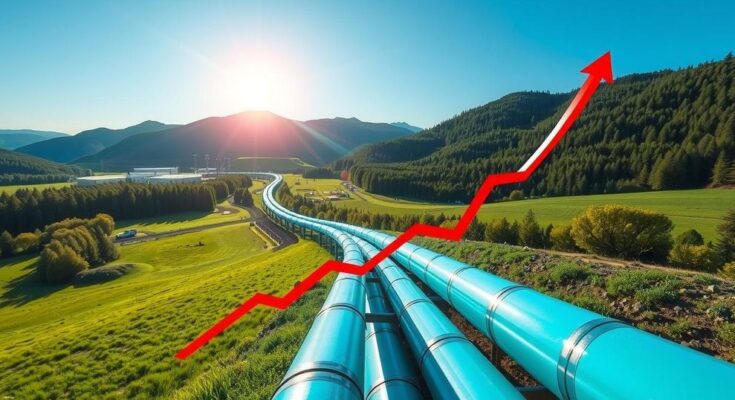Natural gas, a crucial energy source for many daily activities in India, is on the rise in price. Notably, starting April 2025, the government has adjusted its pricing structure to reflect market conditions after two years of stagnant pricing. Currently, natural gas represents just 6% of India’s energy consumption, but the country aspires to increase this to 15% by 2030; hence, it heavily relies on imported liquefied natural gas (LNG).
India’s predicament lies in its substantial import reliance, making it vulnerable to global price fluctuations. For instance, in 2020, ONGC faced financial losses as domestic prices, regulated by a government formula, were lower than extraction costs. The pandemic drove these prices down, reaching as low as $1.79 per MMBTU. However, the situation changed dramatically as economies reopened and the demand surged, exacerbated by the geopolitical tensions from the Ukraine conflict, driving regional prices to dizzying heights.
The government has since responded by reforming the pricing mechanism through the Dr. Kirit Parikh panel’s recommendations. In April 2023, a new formula was introduced that ties domestic prices to a fraction of the Indian crude oil basket. This adjustment includes a minimum floor price of $4 and a cap that may rise until full deregulation in 2027. As of this April, the cap was raised to $6.75 per MMBTU, directly affecting gas producers and consumers, leading to potential increases in costs for industrial users and more subsidy demands from fertiliser companies.
Like a storm on the horizon, several factors influence rising global prices: extreme weather leading to higher energy demands in various regions, an increase in LNG exports from major producers which strangles the spot market, and currency depreciation causing higher costs for imports as the rupee weakens against the dollar. Together, these forces add pressure on India’s natural gas ambitions, making it imperative to address both domestic production challenges and external market volatility.
India is attempting to navigate this complex landscape by boosting local production and expanding its gas infrastructure. With predictions of a 60% increase in gas demand by 2030, ensuring energy security remains a daunting challenge. Learning from examples set by countries like Japan, Brazil, and the US, India aims to reform its pricing strategies and invest in advanced infrastructure. The stark reality is these escalating costs may signal the end of an era characterized by affordable and predictable natural gas prices, urging India to find smarter ways to manage this vital resource effectively.
Natural gas prices in India are rising due to a new pricing structure and global market forces. The government aims to increase domestic consumption from 6% to 15% by 2030 while addressing challenges stemming from import reliance and global price fluctuations. A recent 4% price increase reflects these shifts, alongside efforts to boost local production and infrastructure. The future of India’s energy landscape remains precarious as it navigates these complexities.
In conclusion, the rising prices of natural gas signal a significant challenge ahead for India as it seeks to elevate its energy independence amid global fluctuations. With imports constituting a large part of its gas supply and regulatory changes underway, India must enhance domestic production and adapt its pricing mechanisms. The future hinges on strategic investments and learning from global partners to secure a resilient energy landscape.
Original Source: finshots.in



